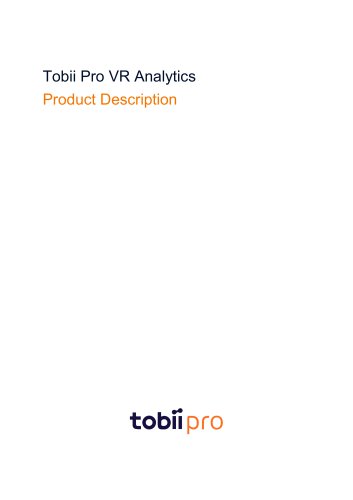
Catalog excerpts

Tobii Pro VR Analytics Product Description
Open the catalog to page 1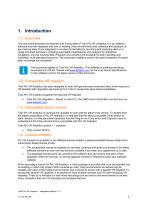
1. Introduction 1.1. Overview This document describes the features and functionality of Tobii Pro VR Analytics. It is an analysis software tool that integrates into new or existing Unity environments and collection and playback of eye tracking data. Once integrated it provides functionality for recording and analyzing data on a range of human behaviors, including automated visualizations and analytics for interaction, navigation, and eye tracking data. Playback and analytics are available for both individual and combined, multi-participant sessions. The automated statistics ensure the rapid...
Open the catalog to page 2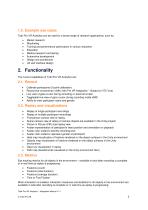
1.5. Example use cases Tobii Pro VR Analytics can be used for a broad range of research applications, such as: • Market research • Wayfinding • Training and performance optimization in various industries • Education • Medical research and testing • Automotive development • Design and architecture • UX and interface design 2. Functionality The current capabilities of Tobii Pro VR Analytics are: 2.1. Record • Calibrate participants (5-point calibration) • Record eye movements (120Hz with Pro VR Integration - Based on HTC Vive) • Live view of gaze cursor during recording on external screen •...
Open the catalog to page 3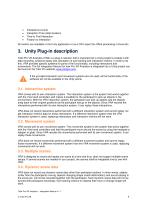
Interactions (count) Interaction Time (total duration) Time to First Interaction Fixation to Interaction All metrics are available in the Unity application or as a CSV export for offline processing in Excel etc. 3. Unity Plug-in description Tobii Pro VR Analytics (VRA) is a plug-in solution that is imported into a Unity project to enable it with data recording, sessions replay and calculation of eye tracking and interaction metrics. In order to do this, VRA provides specific systems for parts of the functionality, including interactions and movements. The full Integration Manual for how Pro...
Open the catalog to page 4
3.5. Object spawning Object spawning is not supported in VRA. Objects that are created dynamically and placed into the environment will not get eye tracking data. 3.6. Level of Detail Level of Detail (LOD) is not supported in VRA. LOD is used to optimize rendering, so that objects that are far away from the camera are rendered with less detail than objects close to the camera. With LOD, multiple meshes can be used for an object depending on the distance to the camera. If LODs are used, heatmaps will not be rendered correctly. For multiple meshes to be treated as the same object in metrics...
Open the catalog to page 5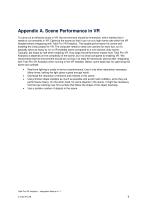
Appendix A. Scene Performance in VR To carry out an effective study in VR, the environment should be immersive, which implies that it needs to run smoothly in VR. Optimize the scene so that it can run at a high frame rate within the VR headset before integrating with Tobii Pro VR Analytics. The largest performance hit comes with enabling the Unity project for VR. The computer needs to draw one camera for each eye, so it’s basically twice as heavy to run a VR enabled scene compared to a one-camera Unity scene. Typically, fps drops by half when enabling VR. How large the performance impact...
Open the catalog to page 6All Tobii catalogs and technical brochures
-
tobii-pro-spectrum
2 Pages
-
Tobii Pro Lab brochure
3 Pages
-
Tobii Pro Glasses 2 brochure
4 Pages

